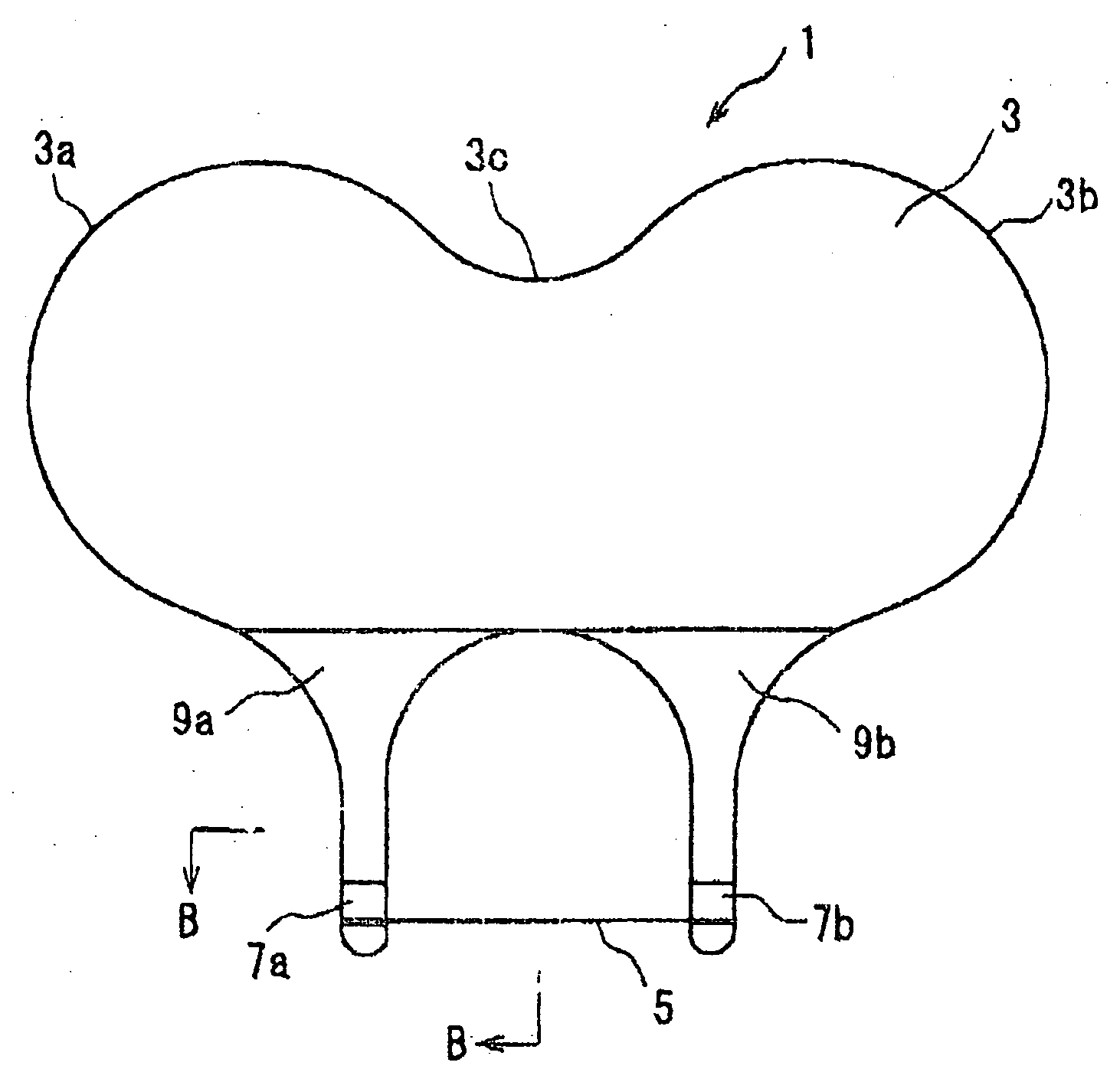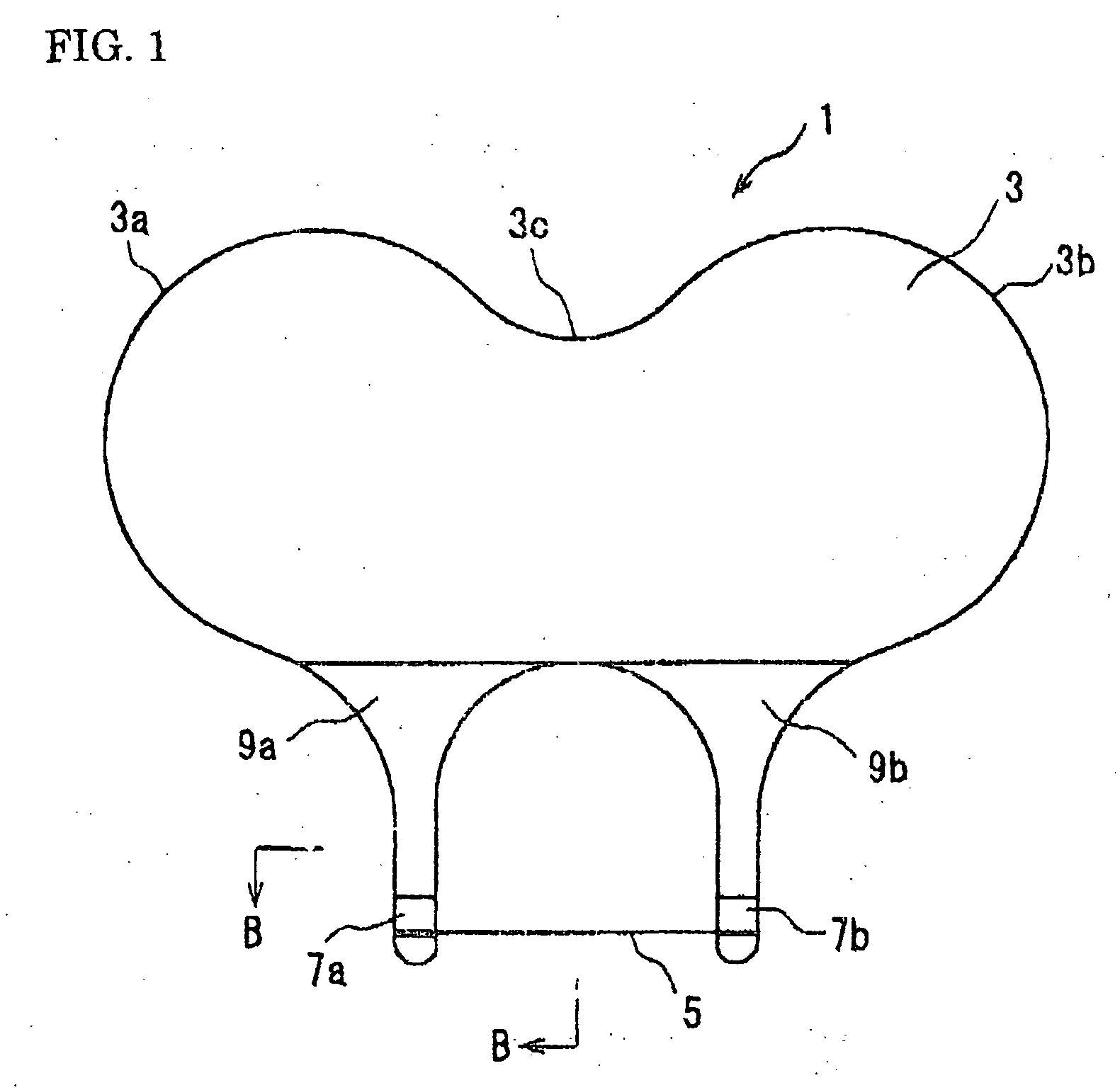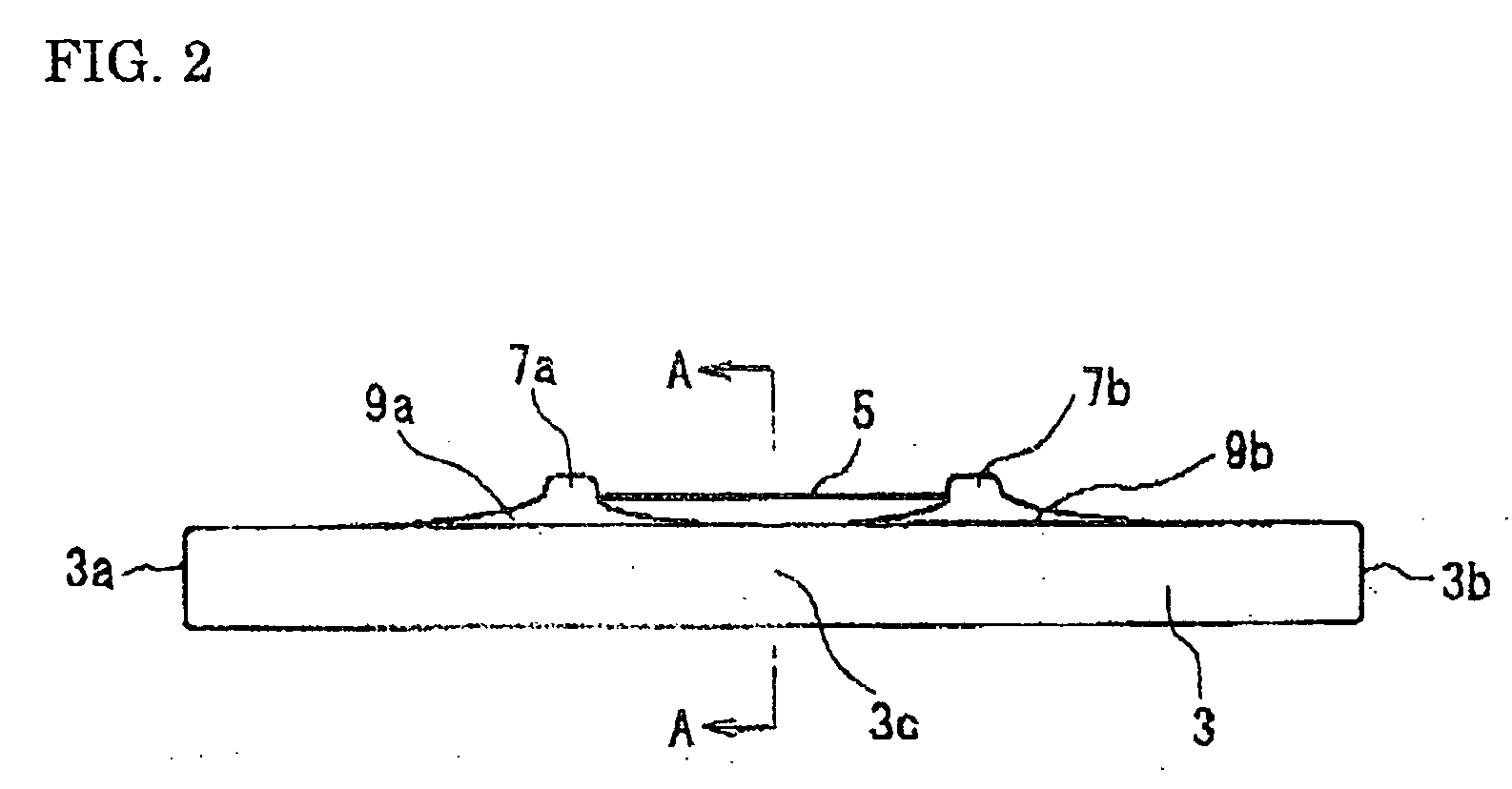Medical instrument for cornea operation
- Summary
- Abstract
- Description
- Claims
- Application Information
AI Technical Summary
Benefits of technology
Problems solved by technology
Method used
Image
Examples
Embodiment Construction
[0067] The best modes for carrying out the present invention will be described using preferred embodiments of the present invention with reference to the accompanying drawings.
[0068]FIG. 1 is a front view of an instrument for preparing the corneal epithelium sheet, wherein the instrument serves as a medical instrument for carrying out a surgical operation of the cornea according to an embodiment of the present invention. FIG. 2 is a plan view of the instrument for preparing the corneal epithelium sheet shown in FIG. 1. FIG. 3 is a right side view of the instrument for preparing the corneal epithelium sheet shown in FIG. 1. FIG. 4 is a bottom view of the instrument for preparing the corneal epithelium sheet shown in FIG. 1. FIG. 5 is a sectional view, taken along the A-A line of FIG. 2. FIG. 6 is an enlarged view of an essential portion, taken along the line B-B of FIG. 1. FIG. 7 is a sectional view, taken along the line C-C of FIG. 6. FIG. 8 is a sectional view, taken along the lin...
PUM
 Login to View More
Login to View More Abstract
Description
Claims
Application Information
 Login to View More
Login to View More - R&D
- Intellectual Property
- Life Sciences
- Materials
- Tech Scout
- Unparalleled Data Quality
- Higher Quality Content
- 60% Fewer Hallucinations
Browse by: Latest US Patents, China's latest patents, Technical Efficacy Thesaurus, Application Domain, Technology Topic, Popular Technical Reports.
© 2025 PatSnap. All rights reserved.Legal|Privacy policy|Modern Slavery Act Transparency Statement|Sitemap|About US| Contact US: help@patsnap.com



